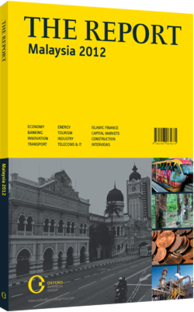A cut above: With the medical tourism segment growing, efforts are under way to diversify source markets
Over the past five years Malaysia has become a major destination for foreigners seeking medical treatment. In 2011 over 578,000 foreign patients sought treatment in Malaysian hospitals and clinics, spending RM511m ($164.8m), up almost 19% on foreign health care expenditure in 2010. At a conference in Kuala Lumpur (KL) in July 2012, Liow Tiong Lai, the minister of health, announced that medical tourism receipts were expected to top RM600m ($193.6m) in 2012. The government and the private sector alike are therefore working to boost Malaysia’s international profile as a high-quality, low-cost destination for medical care.
This segment is overseen by the Malaysia Healthcare Travel Council (MHTC), which falls under the aegis of the Ministry of Health (MoH) and has a mandate to develop the industry as well as promote it. As of mid-2012 some 63 hospitals, medical centres and ambulatory providers were registered with the MHTC.
COMPETITIVE ADVANTAGES: Malaysia boasts many competitive advantages when it comes to health tourism. Perhaps most importantly, both the quality of care and the range of services available are quite high. The government has invested heavily in health care over the past few decades. In 2011 Malaysia spent around 4.7% of GDP on the sector, the majority of which went towards supporting the large network of public hospitals and clinics overseen by the MoH.
In recent years the state has also worked to boost private sector participation in the industry, with the goal of expanding health care options for Malaysians and attracting a larger share of the medical tourism market. Incentives aimed at encouraging private participation in the sector include tax exemption for firms that build new hospitals or expand existing hospitals with the goal of attracting more medical tourists, and other tax incentives for companies that obtain accreditation from either Joint Commission International (JCI) or the Malaysian Society for Quality in Health (MSQH), the national medical standards organisation. As of mid-2012, Malaysia was home to eight hospitals with JCI accreditation, including Gleneagles Hospital, the National Heart Institute, the Penang Adventist Hospital and the Sime Darby Medical Centre Subang Jaya. Additionally, 85 hospitals – 32 of which are private facilities – hold accreditation from the MSQH.
Malaysia also offers low prices than nearby markets.
Some surgeries, in particular, are cheaper by half as compared to Singapore or Indonesia. Nevertheless, spending by medical tourists is significantly higher than that of other types of visitors: in general, medical tourists spend around four times more than their leisure counterparts. Patients seeking health care in Malaysia also benefit from affordable accommodation costs, political stability and high-quality transport infrastructure.
BY THE NUMBERS: In the first five months of 2012 some 236,836 foreign patients travelled to Malaysia for medical care, spending RM200.4m ($64.6m) in total, according to the MoH. Based on these preliminary figures, the sector is expected to attract over 600,000 foreign patients and generate more than RM600m ($193.6m) in revenues by the end of 2012.
The medical tourism segment is almost entirely served by private sector health care providers. In 2011 facilities in Penang attracted around 49% of total foreign medical revenues, while institutions in KL and the greater Klang Valley attracted 21% of total spend and those in Melaka took in about 10%.
The majority of foreign patients in Malaysia travel from neighbouring Indonesia. In early 2012 the Ministry of Health in Indonesia announced a plan to boost accessibility to health care for nationals in an effort to encourage Indonesians to stop travelling abroad for care. If this plan comes to fruition, Malaysia could see a decline in medical tourists from Indonesia, with this likely to have a significant effect on revenue figures.
With this in mind, MHTC is working to promote the segment in nearby countries such as Singapore and Japan as well as further afield in burgeoning health care markets including China, Bangladesh, Cambodia, Myanmar and a handful of nations in the Middle East.
You have reached the limit of premium articles you can view for free.
Choose from the options below to purchase print or digital editions of our Reports. You can also purchase a website subscription giving you unlimited access to all of our Reports online for 12 months.
If you have already purchased this Report or have a website subscription, please login to continue.

